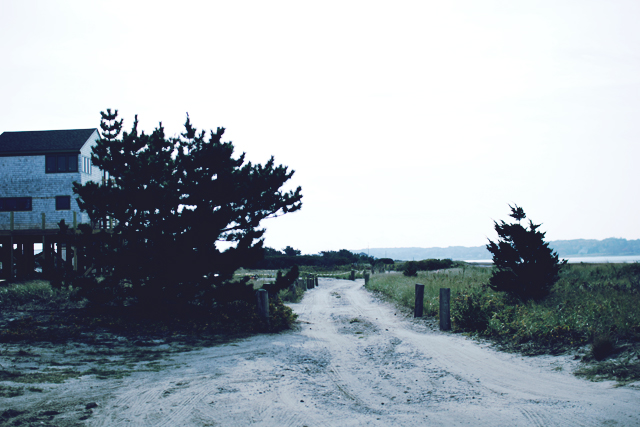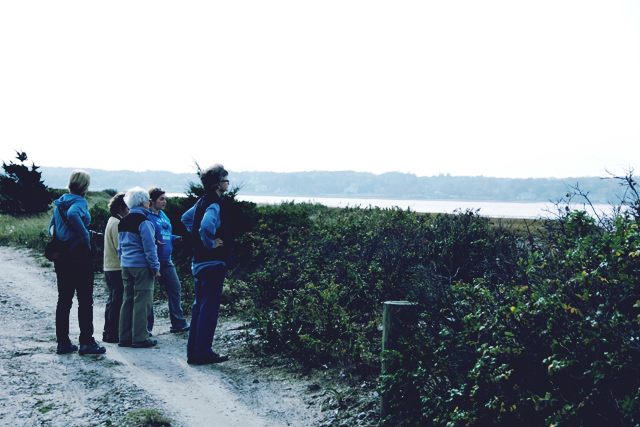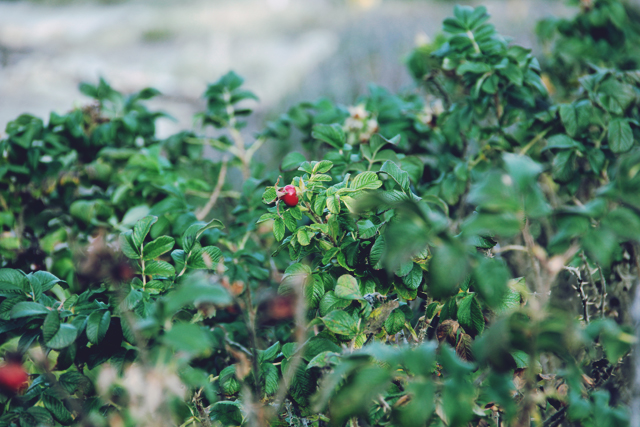
 I had just finished telling a friend that I’d heard you can make jam from the rose hips of the beach rose plant, Rosa rugosa when a fateful email newsletter arrived from the Goldenrod Foundation.
I had just finished telling a friend that I’d heard you can make jam from the rose hips of the beach rose plant, Rosa rugosa when a fateful email newsletter arrived from the Goldenrod Foundation.
“Do you want to join us at a remote field research station on a beach in Plymouth to make rose hip jam?”
HECK YES I DO!
It was yet another unseasonably warm and gorgeous fall day, and the drive past the forests and cranberry bogs of Plymouth was idyllic. I arrived at the parking lot of Long Beach to find a group already assembling.
And what a fine group of women it was. I know it’s not surprising, given the Goldenrod Foundation’s environmental mission, but all the workshop participants have been involved in conservation in some way, whether through their careers or personal life. I found myself wanting to get to know each lady more after our brief introductions.
We all hopped into four wheel drive vehicles to take the long road through the dunes to the Goldenrod field station.


 Dorie gave us a quick lesson on the history of the Rosa rugosa plant and how best to harvest them, before sending us off down the beach to collect the fruit for our jam.
Dorie gave us a quick lesson on the history of the Rosa rugosa plant and how best to harvest them, before sending us off down the beach to collect the fruit for our jam.



 Rosa rugosa is a non-native species originally from China, Japan, and Korea and was first reported in the United States in 1889. Though the beach rose does help stabilize sandy shorelines, it is considered an invasive plant in New England and for landscaping purposes, you might consider planting native beach plum or virginia rose instead.
Rosa rugosa is a non-native species originally from China, Japan, and Korea and was first reported in the United States in 1889. Though the beach rose does help stabilize sandy shorelines, it is considered an invasive plant in New England and for landscaping purposes, you might consider planting native beach plum or virginia rose instead.

 After we collected enough of the tiny fruit, we returned to the field house (which I’ll admit wasn’t as, um, “rustic” as I had pictured) and started preparing the fruit on a beautiful deck overlooking Plymouth Bay.
After we collected enough of the tiny fruit, we returned to the field house (which I’ll admit wasn’t as, um, “rustic” as I had pictured) and started preparing the fruit on a beautiful deck overlooking Plymouth Bay.
The rose hips were cut in half to remove their many tiny seeds, and then chopped into smaller pieces before being boiled in a large stockpot. We also boiled some fruit whole and then used a food mill to separate the fruit from seed, which seemed to be the superior method in the end.
I had never made jam before and I will admit that processing the tiny rose hips was alot of work – but it was all worth it in the end. Not only for the unique-tasting and beautifully colored jam we got to take home, but also for the chance to spend such a fine afternoon with this wonderful group of women in a beautiful beach house overlooking the ocean. Sign up for the Goldenrod Foundation’s newsletter to learn about other great workshops and programs!

















Thanks Caitlin! You’ve captured a wonderful memory with your pictures and words. Keep up the pursuit of your passions!
Thank you so much Kristin!